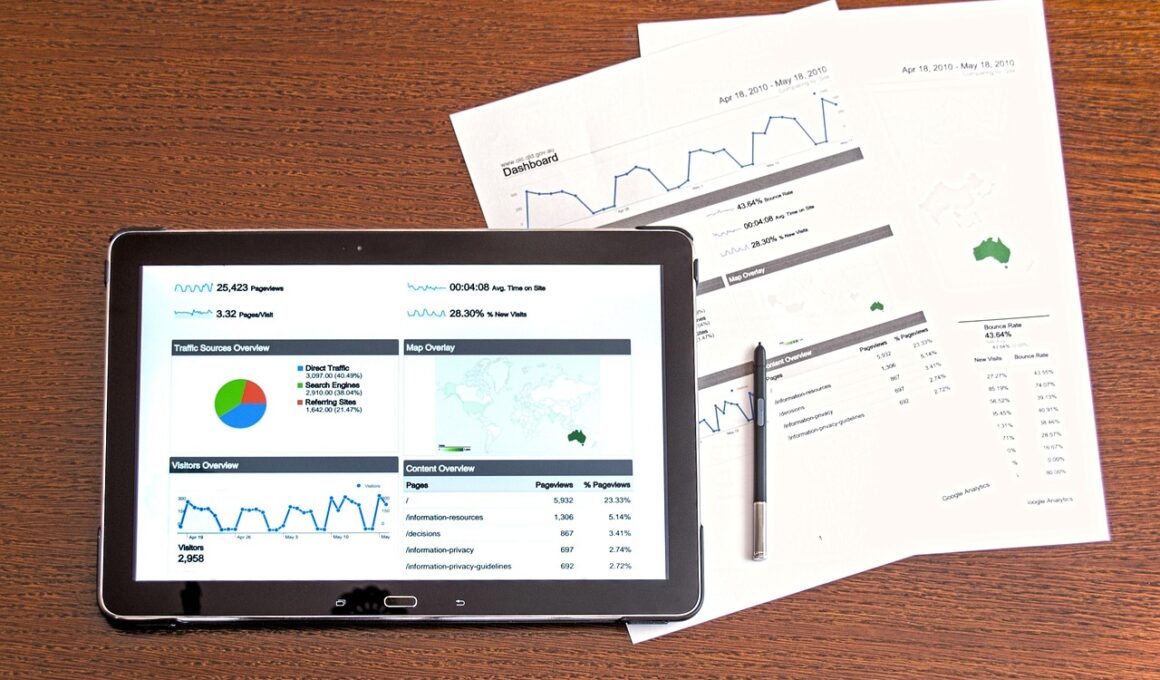Using Email Analytics to Forecast Event Success
Email marketing has become an essential tool for event organizers aiming to ensure the success of their gatherings. By leveraging email analytics, such as open rates, click-through rates, and engagement metrics, event planners can effectively determine the potential success of their upcoming events. Monitoring these metrics provides insight into how recipients are interacting with their emails, which is essential for future strategies. Collecting and analyzing data from previous email campaigns can also highlight what types of messages resonate best with specific audiences. For instance, determining the ideal times to send emails may enhance engagement rates. Utilizing A/B testing to experiment with various subject lines, content, and sending times can further fine-tune campaigns for optimal outcomes. Armed with this knowledge, event marketers can better tailor their messaging and optimize their overall campaigns. This data-driven approach leads to more effective promotional strategies, enhancing ticket sales and attendee engagement. Through continuous learning from analytics, event planners can refine their approaches, ultimately driving better overall event performance and ensuring a memorable experience for all attendees.
One key aspect of email analytics involves understanding the audience’s preferences. By segmenting email lists, event marketers can deliver customized content targeted at specific demographics, increasing the likelihood of registration and participation. Individuals respond better when they receive information relevant to their interests and needs. For example, past attendees of a healthcare conference may appreciate news about upcoming sessions or speakers relevant to their field. On the other hand, those interested in technology might prefer updates concerning new innovations or networking opportunities. With this targeted approach, it’s vital to collect baseline data before sending campaigns, such as the previous engagement rates and registration numbers. This will allow planners to measure growth and effectiveness accurately. Event organizers can implement surveys post-event to further understand attendee preferences and expectations. These efforts contribute to creating a personalized experience, indicating to participants that their interests are valued. As a result, this not only enhances immediate engagement in the event but can also foster long-term loyalty and attendee retention, crucial for future events.
The Importance of Timing
Timing plays a significant role in the effectiveness of email campaigns for event marketing. Analysis of previous campaign data can reveal optimal days and times for sending emails. For instance, data may indicate that sending emails during weekdays, particularly in the mid-morning, generates higher open rates compared to weekends. Similarly, sending invitations early enough allows potential attendees time to plan accordingly. A well-timed email can significantly influence registration numbers and overall success. Moreover, reminders should be sent strategically as the event date approaches, propelling additional sign-ups shortly before the deadline. Following up with segmented emails can prompt those who expressed interest but haven’t registered yet. Utilizing countdown timers in emails has also proven effective in creating urgency, pushing undecided recipients to take action. To maximize reach, event marketers should analyze demographic patterns and tailor sending strategies accordingly. This ensures that emails reach their intended recipients when the likelihood of engagement is at its peak. By mastering timing and utilizing analytics to back up decisions, planners can enhance their event marketing campaigns and improve attendance rates.
Engagement rates reflect how well your emails resonate with your audience. By tracking click-through rates (CTR), event marketers can identify which topics, links, and content generate the most interest. Analyzing this data offers clues about your audience’s preferences, allowing for improvement and fine-tuning of your messaging. Low engagement rates indicate a need for strategy adjustments. Event planners can experiment with more captivating subject lines and mobile-optimized content to capture viewer attention. Adding inviting visuals like images and videos can enrich content. Including engaging calls-to-action also boosts participation, encouraging readers to explore more. Using personalized content, such as addressing recipients by their first names, contributes to higher open rates and overall engagement. Furthermore, integrating social sharing buttons in emails allows participants to share events with their networks, enhancing exposure. This method not only promotes the event but also drives additional registrations, reinforcing the overall effectiveness of the email campaigns. By refining engagement strategies and maintaining an audience-focused mindset, event marketers can see significant improvement in their outreach efforts.
Utilizing Feedback for Improvement
Collecting feedback after events through post-event surveys gives invaluable insights. These surveys help assess success and identify areas for improvement in future marketing strategies. Questions should address various aspects, such as how attendees heard about the event and their thoughts on email communications leading up to it. This information helps marketers gauge the effectiveness of their email campaigns, revealing which messages prompted action. Furthermore, analyzing attendee feedback about the event itself can shape future marketing efforts. For instance, suggestions regarding topics or speakers can inform future content decisions. A commitment to listening to attendees fosters positive relationships and shows them their opinions matter. This enhances brand loyalty and can boost repeat attendance. After analyzing the feedback, organizers should implement appropriate changes in their upcoming campaigns. When attendees see their suggestions put into action, it can significantly increase trust and respect toward the brand, making them more likely to participate in future events. Continuously iterating and optimizing based on feedback creates a cycle of improvement, essential for sustained event marketing success.
Beyond raw analytics, insightful reporting plays a critical role. Creating summarized reports from email campaigns allows marketers to visualize trends and forecasts more effectively. These reports often encompass open rates, CTR, and conversion metrics, serving as a comprehensive overview of email performance. Advanced tools also offer predictive analytics features, enabling planners to project future event success based on past data. Predictive analytics uses historical data to create models identifying which factors drive engagement, helping marketers prioritize which strategies to implement. Furthermore, visualizing campaign data using graphs and charts enhances understanding within teams. By comparing past and current performance succinctly, stakeholders may grasp areas needing improvement swiftly. Regular reporting creates a constant feedback loop, allowing event marketers to remain proactive rather than reactive. Enhanced reporting contributes to informed decision-making for future events, increasing the potential for success and a greater return on investment. Thus, scheduling consistent data reviews boosts campaign strategies significantly, ensuring event planners are consistently aligned with their audience’s preferences and trends, leading to sustained growth in attendance and engagement.
Conclusion: The Path Forward
In conclusion, utilizing email analytics is paramount for predicting event success. Monitoring metrics helps refine overall email campaigns and enhances engagement with potential attendees. Comprehending audience preferences through segmentation and personalized content establishes deeper connections. The importance of timing for email delivery and the engagement metrics further empower marketers to develop effective strategies. Additionally, feedback collection through surveys post-event not only measures success but also fosters relationships with attendees, prompting improvements for future events. Finally, compiling reports and utilizing predictive analytics aids in crafting data-driven strategies that lead to better outcomes. Embracing an analytical mindset and committing to continuous improvement ultimately cultivates more successful events. As the landscape of event marketing evolves, incorporating these strategies into email campaigns will prove invaluable in the pursuit of outstanding results. By focusing on measurable outcomes, planners can achieve greater engagement, heightened attendance, and a more memorable experience for all participants. Event marketing will remain a dynamic field, but focusing on data-driven strategies now lays the foundation for future successes.
In the ever-evolving field of event marketing, effectively utilizing email analytics is vital to forecasting event success. With continuous advancements in technology and analytics tools, event planners have the power to access valuable data that shapes their marketing strategies. By closely monitoring key metrics and making data-driven decisions, event marketers can identify trends, boost engagement, and enhance overall success through improved strategies. As they forge ahead into a data-centric future, email analytics stands as a crucial component for ensuring the successful execution of events and meaningful participant experiences. Prioritizing an analytical approach prepares marketers to meet their audiences’ expectations, standing out in an increasingly competitive landscape and ensuring vibrant, impactful gatherings.


